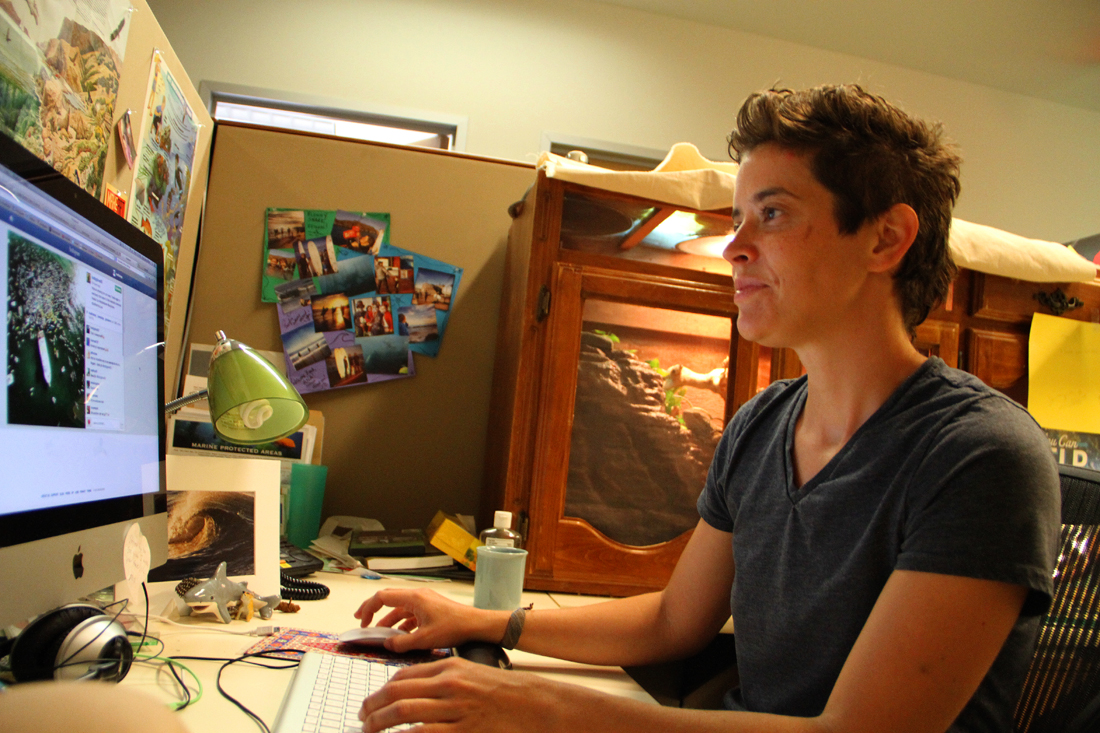
CITYWIDE — Instead of chopping down trees to make newsletters, local nonprofits are going digital.
In the year and a half since Ana Luisa Ahern came on board as interactive campaigns manager for Santa Monica-based environmental watchdog Heal the Bay, the organization has seen a growth of 20,000 Twitter followers and broke 300 "likes" on one Instagram photo — both impressive feats.
The organization, which was already using those platforms prior to Ahern's arrival, recently began devoting more time to social media.
Heal the Bay and other Santa Monica-based nonprofits use social media as a creative avenue to engage and interact with their audiences, generate conversations about specific causes and promote their names and missions.
"Social media helps by putting out the spirit of the organization to a broad audience," Ahern said. "It's showing beautiful images and getting people engaged in a conversation, and giving people a sense of who Heal the Bay is and why we're doing what we are."
Heal the Bay uses Facebook, Twitter, and Ahern's personal favorite, Instagram, where users can share photos with each other and "like" them.
Experts say one of the main goals of using social media as a tool is to drive traffic to websites, where people can get more detailed information or make donations.
"Until you get somebody on your website, they're not going to do anything." said Katharine Coles, founder and CEO of Mad Marketeer, an agency specializing in search optimized and Internet marketing for start-ups and small to mid-sized businesses, including nonprofits.
For many the goal is to get more volunteers and donors.
"Nonprofits think they're different than everybody else, but the people they're trying to attract, it's a consumer like any other consumer," Coles said.
Carolyn Baker, vice president of community development at Step Up on Second, a homeless and mental services provider, said the nonprofit tries to attract a community who is interested in "two, really, really big ideas, permanent housing and supportive services."
She sees using social media as a tool for "story telling."
Step Up on Second uses Twitter, where it has more than 300 followers, and has a presence on Facebook.
OPCC, Santa Monica's leading homeless services provider, has a presence on YouTube, Facebook, Twitter and Instagram and counts its audience as people who are already known to OPCC or vice versa, said Kait Peters, development director at OPCC. Those people include volunteers and donors.
The nonprofit sees traffic on Facebook, or occasionally receives direct messages from people it's served who want to say thank you, Peters said. The most common way to revert traffic to the OPCC website is "by posting something eye-catching or timely and then adding ‘For more information, visit opcc.org' or ‘For more information, click here'" on social media, she said.
"We try to find ways to get people on the site because then they're more likely to click around and learn more about OPCC, since they're there already," Peters said.
For Heal the Bay, which now has more than 30,000 followers on Twitter, the focus is more "local," said Ahern, and there's a shift toward engaging a younger and more broad audience. She hopes to see Heal the Bay have the same level of recognition as bigger organizations like Oceana or Surfrider Foundation.
Other local nonprofits just joined the social media fray recently.
WISE & Healthy Aging, a senior services provider, started looking into social media after coming across recent studies indicating people in their 60s and older were using e-mail or Facebook in increasing numbers, said Mitch Orlik, executive vice president at the nonprofit. WISE got help from Coles' company to figure out what it needed to do.
"For nonprofits who want to be involved in social media, certain infrastructure has to be built," Orlik said. "You have to better understand how you use your website."
The organization created a Facebook page and a page associated with an upcoming event next month at Santa Monica Art Studios. The nonprofit decided to use e-mail and social networking to advertise the event, Orlik said.
"Having a Facebook page is somewhat like having a website — lots of people can create them but if no one visits, it really does not help to promote your cause," Orlik said.
For all its positive reinforcement, social media can have a downside. For example, Peters, of OPCC, said it can be difficult to measure the return.
"We know people are seeing it, but what are they doing because they're seeing it? We all have guilt we're not doing enough social media," Peters said. "The first thing you think is it's free and easy. It's not. It's not free because it's somebody's staff time doing it."
Baker, of Step Up on Second, said social media can be so fast-paced and it can demand "attention."
"Is it a downside to be virtual? I think it's that strength because I can access not only people in Santa Monica, in Los Angeles County, but all over the globe," Baker said.
Gone are the days when organizations held big golf tournaments, or dinners with a band and a chicken dinner, said Baker .
Now, she says those models are expensive, time consuming and a little "self-serving."
But with a tweet-up, where folks can meet others virtually on Twitter, "you access a whole new market and audience."
"It's a new, fresher way to do business," Baker said.
ameera@www.smdp.com









